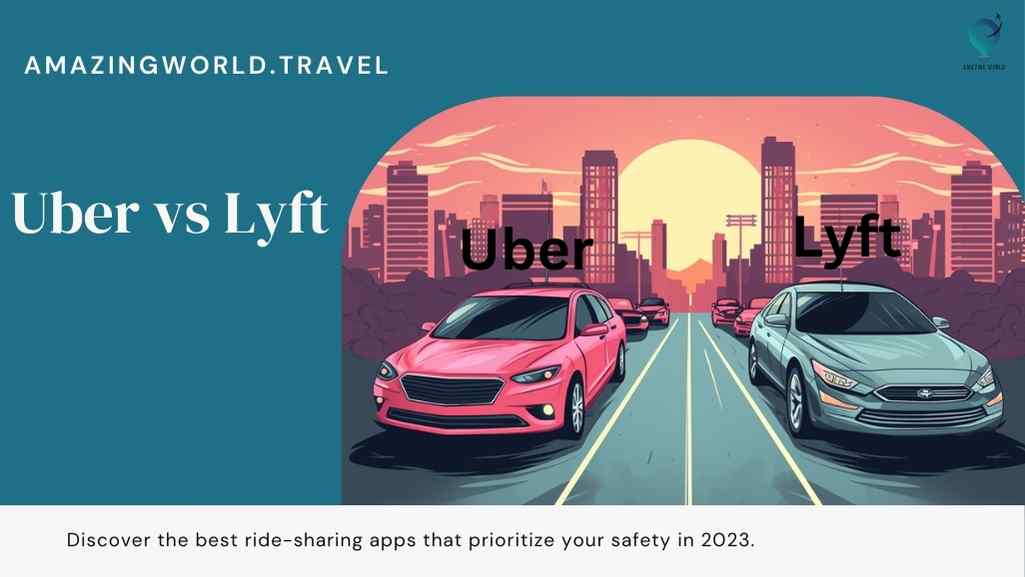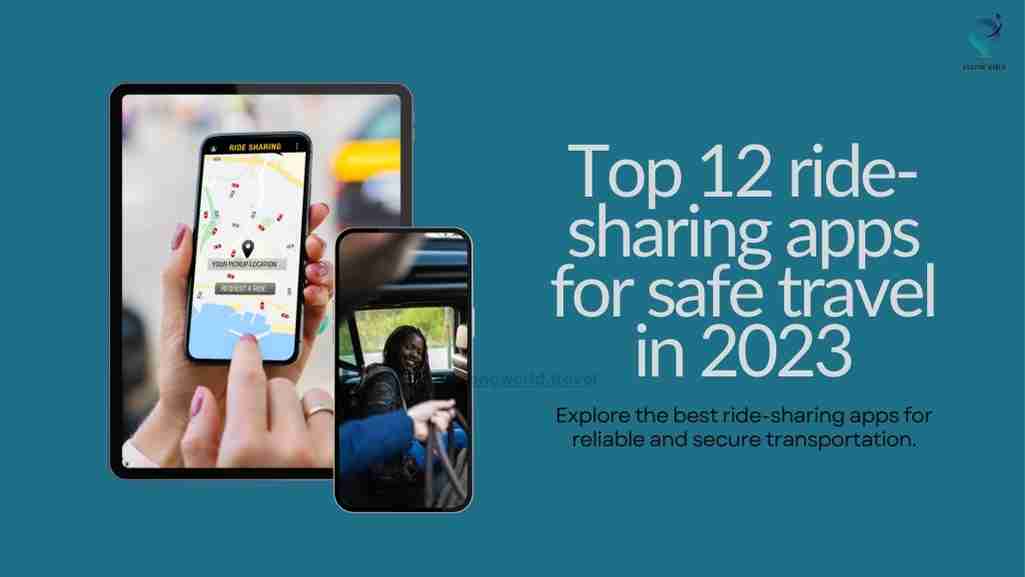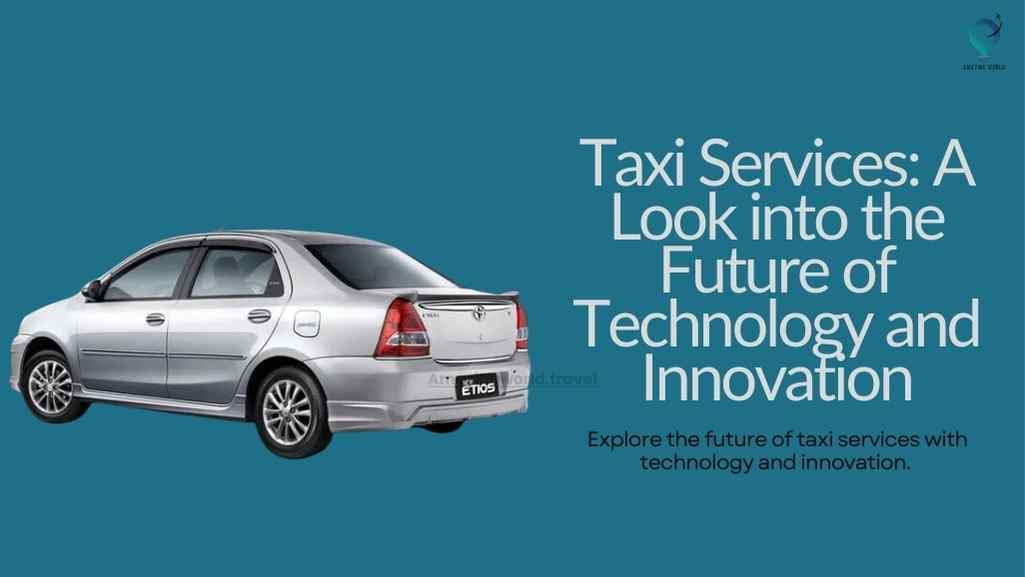Uber vs Lyft: Which Ride-Sharing App Offers Better Safety Features in 2024?

Are you looking for a safe and reliable way to get around town in 2024? In the fast-paced world of ride-sharing, choosing the right service is crucial for your comfort and security. Uber and Lyft have become household names in this ever-evolving industry, and today, we’re here to help you decide which one offers the best safety features for your peace of mind.
Whether you’re a seasoned rider or new to the ride-sharing game, understanding the safety aspects of these services is vital. In this comprehensive guide, we’ll delve into the safety measures employed by Uber and Lyft, comparing their unique features, insurance coverage, and much more.
About Uber and Lyft Ride-Sharing Apps

Uber and Lyft are two of the most prominent ride-sharing apps globally, revolutionizing the way people move from one place to another. They both originated in the United States and have expanded their services to numerous countries around the world. Here is some essential background information on both companies:
Uber: Uber Technologies, Inc., commonly known as Uber, was founded in March 2009 in San Francisco, California. It was created by Travis Kalanick and Garrett Camp. Uber is known for pioneering the ride-sharing industry by introducing the concept of connecting riders with drivers through a mobile app. Over the years, Uber has expanded its services beyond traditional ride-sharing, including food delivery through Uber Eats and a range of vehicle options, from budget-friendly to luxury.
Lyft: Lyft, Inc. is another major player in the ride-sharing industry, with its roots tracing back to 2012. Founded by Logan Green and John Zimmer in San Francisco, Lyft’s primary focus has been on creating a community of drivers and riders, promoting friendly and approachable transportation. Like Uber, Lyft offers a range of ride options and additional services like bike and scooter rentals.
How Ride-Sharing Apps Have Transformed Transportation

The advent of ride-sharing apps, led by companies like Uber and Lyft, has brought about a profound transformation in the transportation sector. Here’s how these apps have reshaped the way people get around:
- Convenience: Ride-sharing apps have made transportation more accessible and convenient. With a few taps on a smartphone, users can request a ride to their location, eliminating the need to hail a taxi on the street or wait for public transportation.
- Affordability: Ride-sharing services often provide a more cost-effective alternative to traditional taxis, making them a preferred choice for many. They offer various service tiers, allowing users to choose options that fit their budget.
- Ridesharing Communities: Both Uber and Lyft have fostered a sense of community by allowing drivers and riders to rate each other and provide feedback. This accountability has contributed to safer and more pleasant rides.
- Increased Transportation Options: These apps have expanded transportation options beyond traditional taxis, providing users with a diverse range of services, including carpooling, luxury rides, and even bicycle and scooter rentals.
- Reduced Dependency on Car Ownership: Many people have found that they can rely on ride-sharing apps for their transportation needs, reducing the need for car ownership. This shift has the potential to reduce traffic congestion and lower the environmental impact of personal vehicles.
Uber vs Lyft: Safety Features Comparison

When choosing between Uber and Lyft for your ride-sharing needs, safety is a top concern. Both companies have implemented a range of safety features and requirements to ensure the well-being of both passengers and drivers. In this detailed comparison, we will explore the safety features, including driver and vehicle requirements, and the types of services offered by both companies.
Driver and Vehicle Requirements

Age and Experience Requirements for Drivers
- Uber: Uber typically requires its drivers to be at least 21 years old.
- Lyft: Lyft sets a slightly higher age requirement, mandating that drivers be at least 25 years old.
- Both Uber and Lyft impose minimum driving experience requirements, with Uber requiring a minimum of one year and Lyft three years for drivers under the age of 23.
Vehicle Specifications and Inspection Requirements
- Uber: Uber vehicle requirements typically include a four-door vehicle, no older than 15 years, and in good condition with no cosmetic damage. Vehicles must also have California license plates.
- Lyft: Lyft allows vehicles with 5 to 8 seats and vehicles that are not older than a 2008 model. Just like Uber, vehicles must have California license plates.
- Both Uber and Lyft require drivers to provide proof of vehicle inspection, ensuring that the vehicles are in good working order and meet safety standards.
Types of Services
Comparison of Services Offered by Both Companies:
- Both Uber and Lyft offer a variety of services designed to cater to different preferences and budgets.
- Common Services: Both companies provide basic services, carpool options, and luxury or XL vehicles for larger groups.
- Bike and Scooter Rentals: Both Uber and Lyft have introduced bike and scooter rental services, offering a convenient and environmentally friendly way to get around.
Safety Features
Ride-sharing companies like Uber and Lyft prioritize safety for both passengers and drivers. In this section, we’ll explore the safety features offered by both companies, including common safety measures and unique safety features for each.
Common Safety Features
Both Uber and Lyft share several safety features aimed at enhancing the security and overall experience of their services. These features include:
Unique Safety Features of Uber
Uber introduced some unique safety features not found on the Lyft platform. These include
Unique Safety Features of Lyft
Lyft also offers its own set of unique safety features, setting it apart from Uber. These include:
Insurance Coverage
Understanding insurance coverage is a crucial aspect of ride-sharing safety. Both Uber and Lyft have established insurance policies to provide financial protection in case of accidents or incidents involving their drivers. Here’s an overview of the insurance policies for both companies:
When Drivers Are Offline: When a driver is offline and not actively engaged in providing ride-sharing services, they are primarily covered by their own personal auto insurance. This insurance is responsible for covering accidents or incidents during this time.
When Drivers Are Online: When drivers are online and available to accept ride requests, both Uber and Lyft provide additional coverage. The coverage varies depending on the specific circumstances of the accident but typically includes:
Taxi Safety vs. Ride-Sharing Safety

When it comes to choosing transportation options, safety is a top priority for passengers. Traditional taxis have been a reliable mode of transportation for decades, but in recent years, ride-sharing services like Uber and Lyft have gained popularity. Let’s compare the safety aspects of traditional taxis and ride-sharing services.
Safety in Traditional Taxis
- Regulation and Licensing:
- Taxis are often subject to strict government regulations and licensing requirements. These regulations are in place to ensure that vehicles and drivers meet specific safety and quality standards.
- Professional Drivers:
- Taxi drivers typically undergo background checks and training to become licensed professionals. They are knowledgeable about local routes and are experienced in handling various situations.
- Vehicle Safety:
- Taxis are usually well-maintained, as they must pass regular inspections to maintain their licenses. Passengers can generally trust that a taxi is in good working condition.
- Physical Presence:
- Traditional taxis are easily identifiable by their distinctive markings, which can make them safer for passengers to hail on the street or at taxi stands.
Safety in Ride-Sharing Services (Uber and Lyft)

- Driver Screening:
- Ride-sharing companies conduct background checks on their drivers, which may include criminal history and driving record checks. This helps ensure the safety of passengers.
- Driver and Rider Ratings:
- Both Uber and Lyft have a rating system that allows passengers to provide feedback on drivers and vice versa. This system encourages good behavior and accountability.
- GPS Tracking:
- The use of GPS technology in ride-sharing apps allows users to track their rides in real time. This feature enhances safety by allowing friends or family to monitor a passenger’s journey.
- Cashless Transactions:
- Ride-sharing services are cashless, reducing the risk of disputes over payments and promoting safer transactions.
- In-App Safety Features:
- Ride-sharing apps include safety features such as emergency buttons and the ability to share trip details with trusted contacts, enhancing passenger security.
Considerations for Passengers
When choosing between taxis and ride-sharing services, passengers should consider the following factors:
- Accessibility: Taxis are widely available in many cities, while ride-sharing services may have varying levels of availability.
- Cost: Ride-sharing services often offer more competitive pricing, while taxi fares can be higher.
- Driver Experience: Taxis may have more experienced drivers while ride-sharing drivers vary in experience.
- App Convenience: Ride-sharing apps provide the convenience of booking and tracking rides through a smartphone.
- Vehicle Condition: Taxis are typically well-maintained, but ride-sharing drivers use their personal vehicles, which may vary in condition.
Common Complaints Against Uber and Lyft

While Uber and Lyft have become dominant players in the ride-sharing industry, they are not without their share of complaints and criticisms. Understanding common complaints against these platforms is important for both passengers and drivers. Here are some of the most prevalent issues and grievances reported by users:
- Pricing and Surge Charges:
- Uber: Many users have complained about Uber’s surge pricing, which can significantly increase fares during high-demand periods. Some passengers feel this pricing is unfair.
- Lyft: Lyft has faced similar complaints regarding price surges, with riders occasionally seeing higher fares during peak hours.
- Driver Behavior:
- Uber: Complaints about driver behavior range from poor navigation skills to rude or unprofessional conduct. Some passengers have expressed concerns about drivers not following traffic rules.
- Lyft: Lyft has faced similar complaints about driver behavior, with issues related to navigation and professionalism being common.
- Safety Concerns:
- Uber: Safety concerns include incidents of drivers behaving inappropriately or passengers feeling unsafe during rides.
- Lyft: Similar safety concerns have been reported on the Lyft platform, with riders raising issues about driver conduct and ride safety.
- Punctuality and Wait Times:
- Uber: Some users have complained about longer wait times for their Uber rides, particularly during high-demand periods or in areas with limited driver availability.
- Lyft: Lyft users have reported similar issues with longer wait times for rides, especially during peak hours or in less densely populated areas.
- Refund and Payment Disputes:
- Uber: Disputes over payments and refund requests have been a common issue. Some passengers have had difficulty resolving payment discrepancies.
- Lyft: Lyft users have also encountered payment disputes, with issues related to incorrect charges or billing discrepancies.
- Cancellation Fees:
- Uber: Passengers have complained about being charged cancellation fees when they believe they should not have been. This issue can arise if a driver cancels a ride or if a passenger cancels within the allowed time frame.
- Lyft: Similar complaints have been made against Lyft regarding cancellation fees and their perceived fairness.
- Driver and Rider Ratings: Both Uber and Lyft use a rating system where drivers and passengers can rate each other. Some users have reported concerns about unfair ratings or being rated poorly without valid reasons.
- Accessibility Issues: Some riders with disabilities have raised concerns about the accessibility of vehicles, particularly those offering wheelchair access. They claim that accessible vehicles are often hard to find.
- App Glitches and Technical Problems: Both Uber and Lyft users have experienced technical issues with the apps, ranging from glitches that affect booking to problems with payments.
- Support and Customer Service: Users have reported difficulties in reaching customer support and receiving timely responses to their queries or complaints. This has led to frustration when trying to resolve issues.
It’s important to note that both Uber and Lyft have made efforts to address these common complaints and improve the overall experience for passengers and drivers. While these concerns are widespread, the platforms continue to refine their services and introduce new features to mitigate these issues and enhance user satisfaction. Users are encouraged to provide feedback and report any problems they encounter to help drive improvements in the ride-sharing industry.
Uber vs Lyft: Which One Is Safer?

When it comes to choosing between Uber and Lyft, safety is a paramount concern for passengers. Both ride-sharing giants have invested heavily in implementing safety measures and features. Let’s examine several factors to consider when determining which platform may be the safer choice:
Driver Screening and Background Checks:
- Both Uber and Lyft conduct thorough background checks on their drivers. These checks typically include criminal history and driving record reviews.
- While both platforms aim to ensure passenger safety, the effectiveness of their screening processes may vary. Passengers should still exercise caution and remain vigilant.
Driver and Vehicle Accountability:
- Uber and Lyft have rating systems that allow passengers to rate their drivers and vice versa. These ratings contribute to a sense of accountability and professionalism.
- It’s essential for passengers to provide honest feedback through these rating systems. Low ratings can lead to drivers being removed from the platform if their performance consistently falls below standards.
Safety Features and In-App Tools:
- Both platforms offer safety features within their apps, such as emergency buttons, allowing users to quickly contact authorities in case of an emergency.
- Uber and Lyft also allow users to share trip details with trusted contacts, enhancing passenger security.
Insurance Coverage:
- Both Uber and Lyft provide insurance coverage for their drivers. When drivers are online and available to accept ride requests, additional coverage is in place to protect passengers in case of accidents.
- These insurance policies typically include third-party liability coverage, uninsured/underinsured motorist coverage, and comprehensive and collision coverage for the vehicle (subject to deductibles).
Diversity of Vehicle Options:
- Both platforms offer a range of vehicle options to cater to various preferences and budgets. Passengers can choose from basic, affordable rides to luxury or larger vehicle options.
- Passengers seeking a specific level of comfort or vehicle type can select the service that best suits their needs.
Unique Safety Features:
- Each platform has its own unique safety features. For example, Uber offers speed limit alerts to drivers, promoting safer driving habits.
- Lyft allows users to share their location and car details with friends, enhancing safety by allowing friends or family to track a passenger’s journey in real time.
Accessibility for Passengers with Disabilities: Both Uber and Lyft have made efforts to improve accessibility for passengers with disabilities, including options for wheelchair-accessible vehicles. However, there may still be challenges in some regions.
Community Standards and Safety Initiatives: Uber and Lyft have introduced community guidelines and safety initiatives to create safer environments for both drivers and passengers. These guidelines include maintaining respectful and appropriate behavior during rides.
Conclusion
In summary, when comparing Uber and Lyft for your rides, both prioritize safety. They check their drivers’ backgrounds, offer in-app safety features like emergency buttons, and provide insurance coverage in case of accidents. You can also rate drivers, which encourages good behavior. Both companies aim to make their services accessible to passengers with disabilities.
There are unique safety features as well. Uber reminds its drivers to follow speed limits, and Lyft allows you to share your ride details with friends.
Ultimately, the safety of your ride often depends on the driver, your location, and the circumstances of your trip. Safety is a shared responsibility between the companies, drivers, and passengers.
How much did you like Our Detailed Uber vs Lyft: Pros and Cons of Each Rideshare Service? Review Also, please share these Blogs with your friends on social media.
Recommended
- Taxi scams in the USA and Europe
- 10 Common Taxi Scams and How to Avoid Them
- 10 Essential Taxi Safety Tips
- How To Calculate Your Taxi Fare
- How Fraudsters Take Ride-Hailing Apps

Meet David Hoper, a passionate travel Blog writer with 7+ years of experience in travel content. Through his exemplary storytelling and engaging narratives, he shares his experiences and brings destinations to life. With a keen eye for detail and a love for exploration, he has cultivated a diverse portfolio of travel blogs that inspire and inform readers worldwide.








